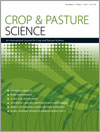CP13409Molecular characterisation of high molecular weight glutenin allele Glu-B1h encoding 1Bx14+1By15 subunits in bread wheat (Triticum aestivum L.)
High molecular weight glutenin subunits (HMW-GS) mainly determine dough elasticity and play important role in bread-making quality. In this study, the authentic HMW-GS 1Bx14 and 1By15 from German bread wheat cultivars Hanno and Imbros were identified and characterised, and their structural features as well as potential effects on gluten quality were studied. Our results provide new information for further understanding the molecular structure, phylogenetic evolution and functional properties of gluten encoded genes for wheat quality improvement.




